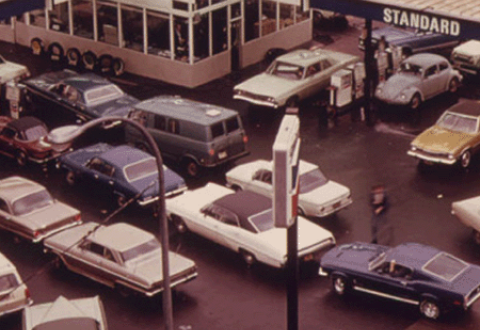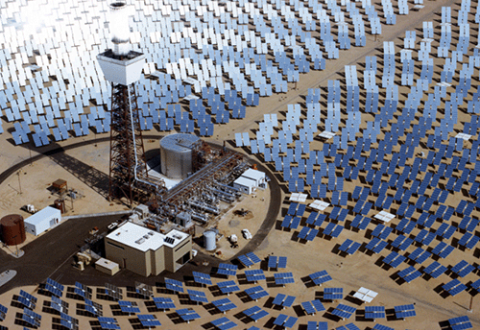Introduction
Flip the switch. Plug it in. Americans rely on a constant supply of electricity. Where does all that power come from? Burning fossil fuels—coal, oil, and natural gas—has been the most common way to generate electricity. But that releases greenhouse gases that contribute to global climate change. Although no energy source is perfect, using renewable sources including solar energy is becoming an important option.
Humans have used the sun’s light and heat for millennia but only recently learned how to convert solar energy to electricity. Researchers today are tackling technical and economic challenges to make solar power more efficient, reliable, and cost-effective. And people across the country—from the board room to the dining room—are deciding to “go solar.”
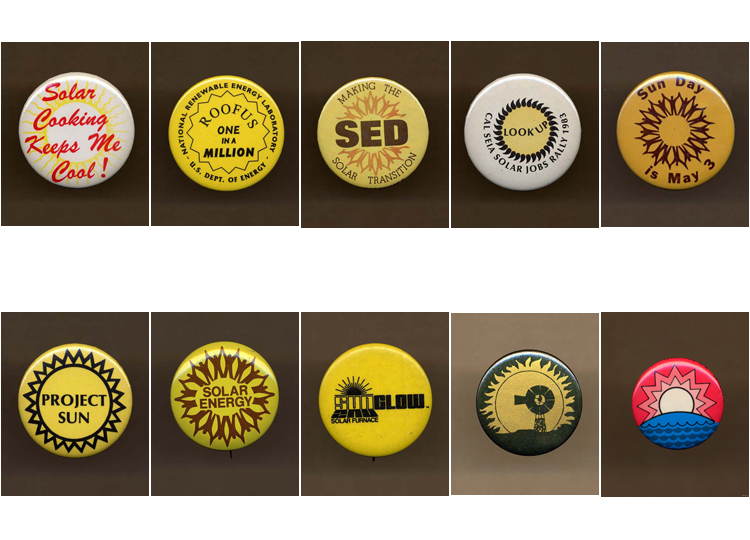
Buttons advocating solar energy, 1970s and 1980s.For many people, the 1970s energy crisis was a call to action to change how electricity was generated and used. Making the choice to “go solar”—and encouraging others to do the same—reflected growing optimism about the potential of clean, accessible solar energy.Gift of Gerald H. Meral; Smithsonian photo

Power cable for 345,000 volt system, around 1970Electric power lines have been connecting generating plants to customers since Thomas Edison put lines under the streets of New York City in 1880. Today aluminum lines like this one carry electricity hundreds of miles. Keeping a steady flow of electricity in the grid while adding intermittent power from many dispersed solar panels is an engineering challenge.Gift of Consolidated Edison Company of New York; Smithsonian photo
SOLAR THERMAL: Putting the Sun’s Heat to Work
The sun’s heat is an important source of energy. In nature the sun warms the earth and the atmosphere and causes the wind to blow. People have tapped the sun’s energy to warm their homes, dry clothes, cook food, and boil water. Even the White House began using solar panels to heat water during the 1970s. When solar thermal energy is concentrated, it can be used to generate steam that spins turbines to generate electricity.
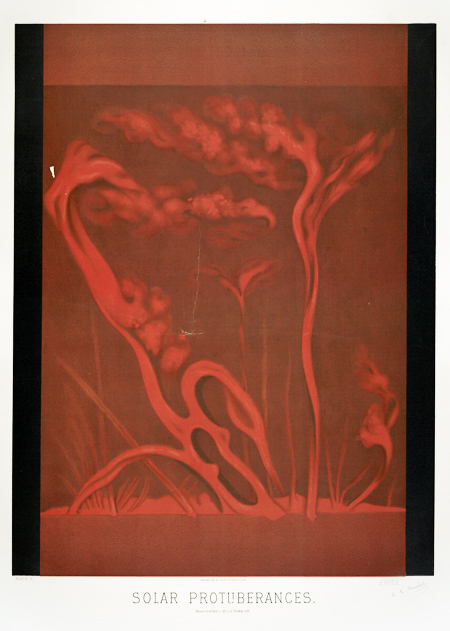
From Etienne L. Trouvelot, Astronomical Drawings. Plate II, Solar Protuberances. Observed on May 5, 1873 at 9h, 40m. A.M. New York: C. Scribner’s Sons, 1882.
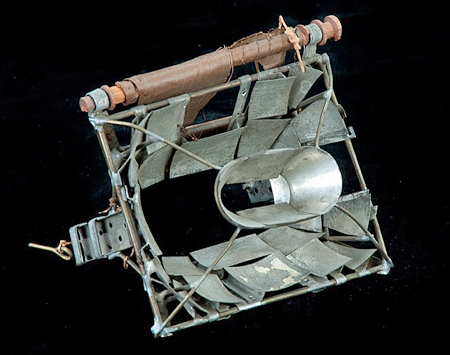
Solar heater patent model, 1880James P. Mauzey of Blackfoot, Montana Territory, patented a solar heater in 1880. His patent called for a movable frame to track the sun and adjustable glass or metal reflectors “for concentrating and focusing the rays . . . for any desired purpose.” Pulling a curtain over the reflectors turned the unit off.Transfer from U.S. Patent Office; Smithsonian photo
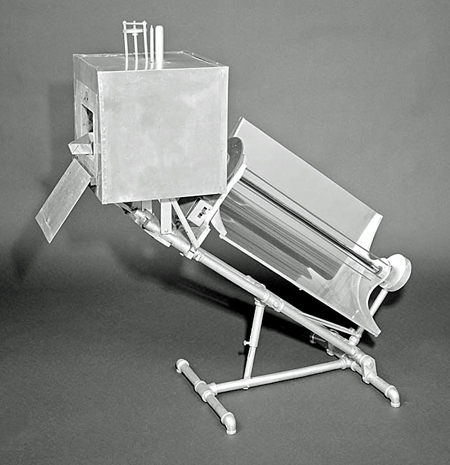
Solar oven, 1938While secretary of the Smithsonian, astronomer Charles G. Abbot continued researching ways to use solar heat. He made this solar oven and reported: “It requires about an hour to heat the oven to about 130°C [266°F] above surrounding temperatures, and the oven bakes cakes 3 inches [7.5 centimeters] square very nicely in a half hour.” Abbot received several patents for solar inventions, including this oven. Smithsonian photo
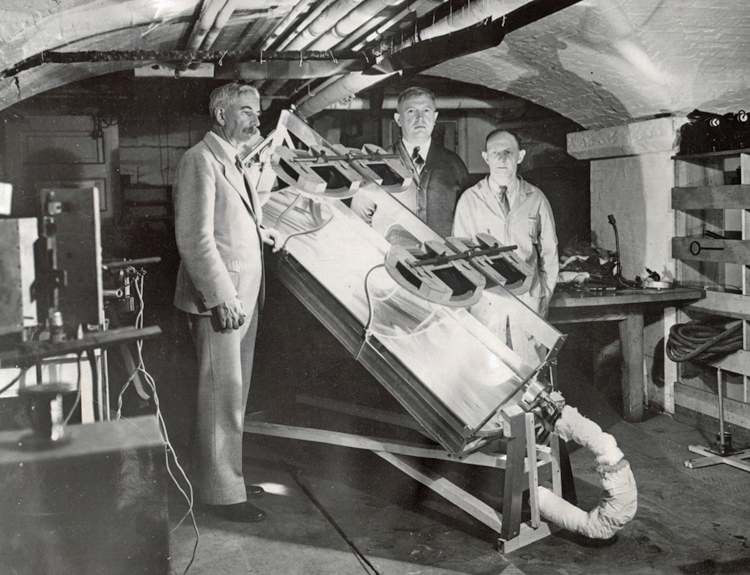
Charles G. Abbot with assistants testing a solar engine, 1935. Smithsonian photo

Wash day towel, around 1942Sometimes using solar energy can be as simple as a clothesline. This embroidered towel is one of a set of seven, each depicting a domestic chore done on a given day. Traditionally, Monday was wash day.Gift of William E. Kost; Smithsonian photo
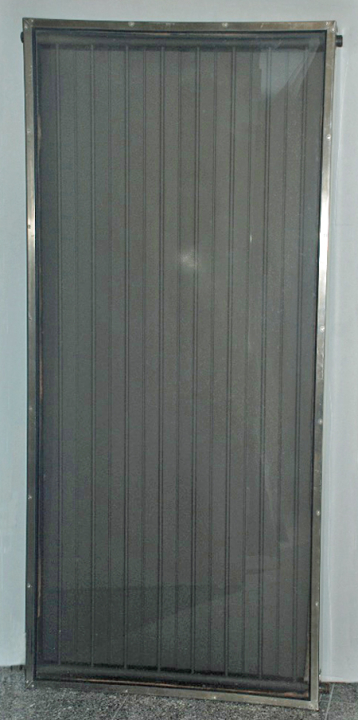
Solar water heater panel used on the White House, 1979President Jimmy Carter had solar panels, including this one, installed on the White House roof in 1979. Rather than generating electricity, water circulated through tubes in the panels and absorbed solar heat. The panel provided hot water for use by the president's staff and family. President Ronald Reagan ordered the panels removed in 1986. As energy costs fell public enthusiasm for solar power waned, only to rebound in the 21st century. Newer solar panels, installed during the presidencies of George W. Bush and Barack Obama, supply hot water and electricity to the White House today.Gift of Unity College; Smithsonian photo
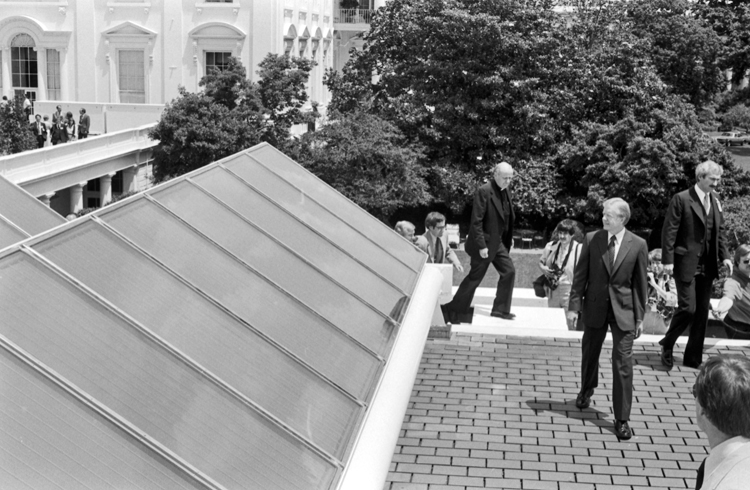
President Jimmy Carter inspects White House solar thermal panels, 1979. He remarked, “A generation from now, this solar heater can either be a curiosity, a museum piece . . . or it can be just a small part of one of the greatest and most exciting adventures ever undertaken by the American people: harnessing the power of the sun . . .” Photo courtesy of Jimmy Carter Presidential Library

Solar tea maker, around 1983During the 1970s, war and political turmoil in the Middle East resulted in embargos on oil imported to the United States. The restrictions caused sharp increases in the cost of energy. Entrepreneurs responded with many products that promoted energy conservation. To make solar tea one simply filled this jar with water, put in tea bags, and closed the top. Leaving the jar sit in the sun for a few hours allowed solar heat to brew the tea.Gift of Harold D. Wallace Jr.; Smithsonian photo
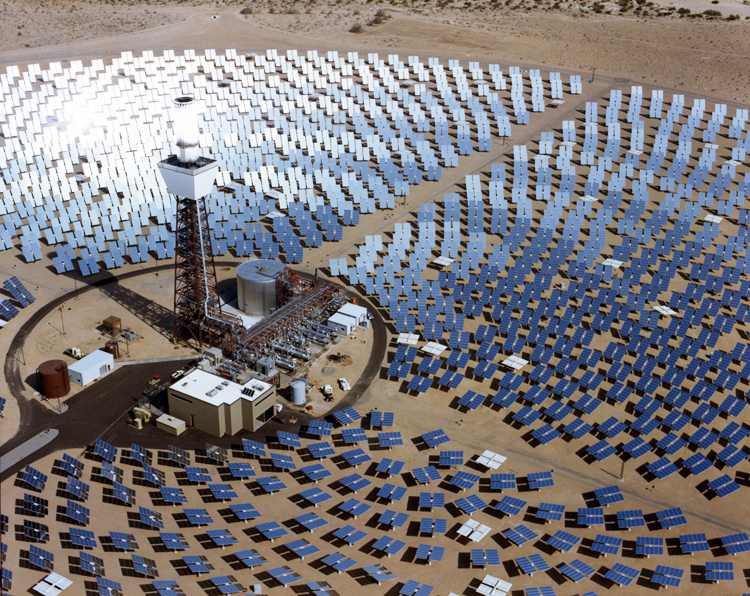
Solar One project to generate electricity for the grid, Barstow, California, 1982. Courtesy of Sandia National Laboratories
SOLAR ELECTRIC: Photovoltaics
In 1839 French scientist Edmond Becquerel discovered that light produces an electric current in certain materials. By the 1950s, scientists and engineers had expanded this discovery into the science of photovoltaics, or generating electricity from light, and invented the first solar cells. A few solar cells can power small devices like radios and calculators. Linked together in panels, solar cells can power an entire house. Every item powered by solar cells is one less device drawing power from the grid.
Applying solar energy on a small scale built technical expertise and created markets for solar powered devices. It also fueled further research into new materials and designs that capture more of the sun’s energy, helping to increase efficiency and lower costs. However, storing large amounts of electricity remains difficult.
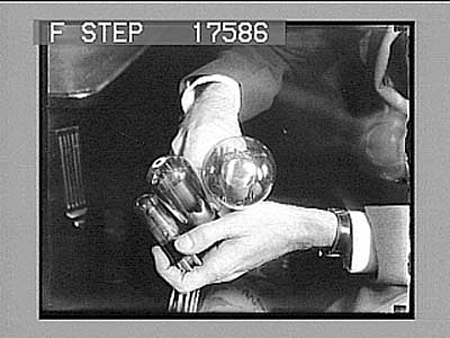
Radio tubes, around 1900 (RSN 18262). George C. Clark "Radioana" Collection, Archives Center, National Museum of American History, Smithsonian.Vacuum tubes are specialized light bulbs that control the flow of electric current. Commonly used in 20th-century radios and televisions, tubes burned out and consumed a lot of electricity. The invention of transistors at Bell Labs in 1947 gave engineers a more reliable alternative that needed very little power to function.
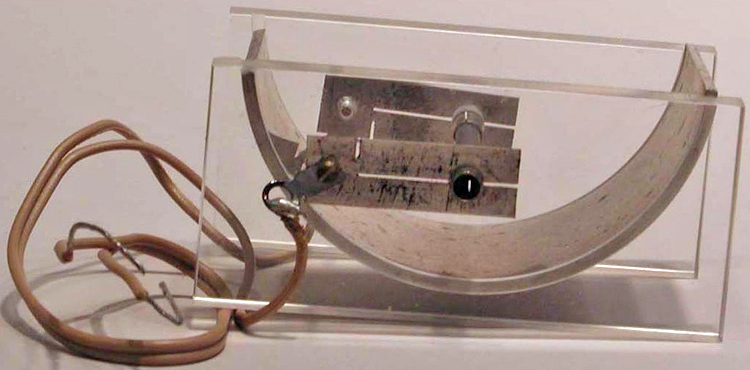
Experimental silicon P/N junction, 1940Engineer Russell Ohl worked at Bell Labs during the 1930s. While researching semiconductors—materials whose ability to conduct electricity can be manipulated—he found positive (P) and negative (N) regions created by impurities in his silicon sample. The barrier between the regions, called a P-N junction, prevented electrons from moving—until he exposed the silicon to sunlight. Then electrons crossed the junction and generated a current, converting sunlight into electrical energy. The silicon rod mounted in this reflector contains a P-N junction across the center. Ohl’s discovery contributed to the invention of both solar cells and transistors. Gift of Russell Ohl; Smithsonian photo
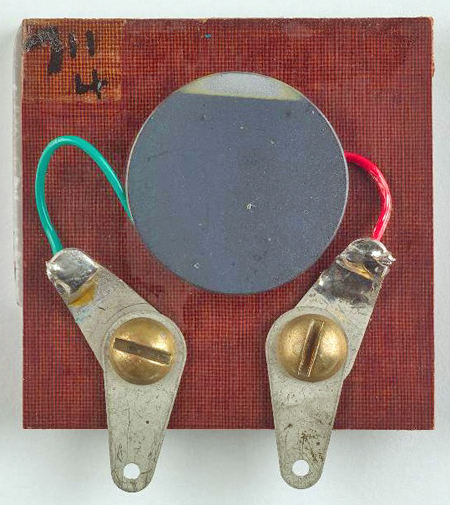
Bell Labs experimental photovoltaic cell, 1954Building on the work of Russell Ohl, Bell Labs researchers Daryl Chapin, Calvin Fuller, and Gerald Pearson invented a practical solar cell in 1954. The company adapted the invention to power telephone equipment in remote locations. This early experimental cell still produces electricity today.Gift of Peter Iles; Smithsonian photo

Bell Telephone technician installing solar panel for telephone relay, Americus, Georgia, 1958. Courtesy of Bell Telephone Laboratories
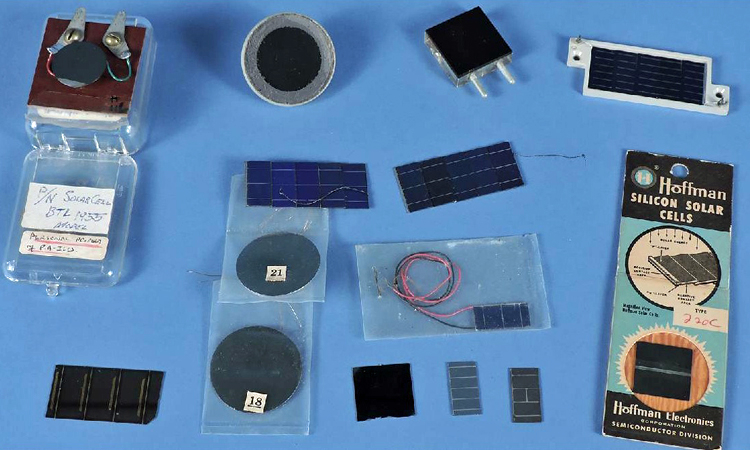
Silicon solar cells, 1960–1985Solar cells come in many shapes and sizes, and are manufactured with a variety of materials. These are all made with the element silicon. The dark areas absorb sunlight. The thick and thin lines are part of the electrical circuit. Gifts of Peter Iles, Eugene L. Ralph, and Electric Power Research Institute; Smithsonian photo
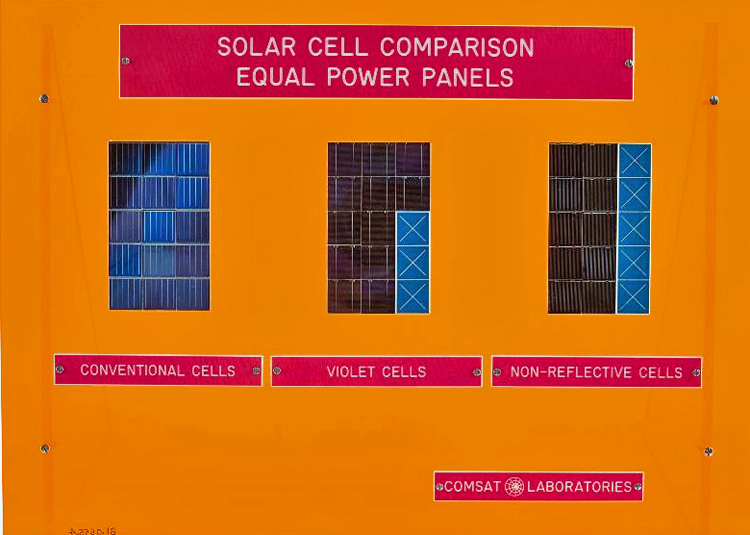
Comsat solar cell display, around 1975This display shows a decade of experimentation with new materials and techniques to improve solar cell efficiency. Each group of cells on the panel produces an equal amount of electricity. A violet cell absorbs more light than a conventional cell by converting light to electricity closer to its surface. A non-reflective cell absorbs even more light because less bounces off its surface.Gift of Comsat Laboratories; Smithsonian photo
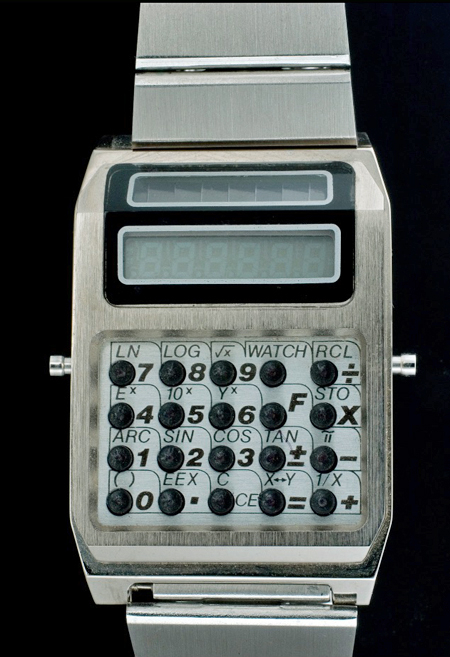
Chronar calculator watch, around 1977Consumers could buy solar-powered products within ten years of the of invention solar cells. Entrepreneur Zoltan Kiss founded Chronar Corporation in 1976 and introduced this calculator watch the following year. The watch used battery power in combination with solar cells that are located above the numerical display. Gift of Louis A. Zanoni; Smithsonian photo
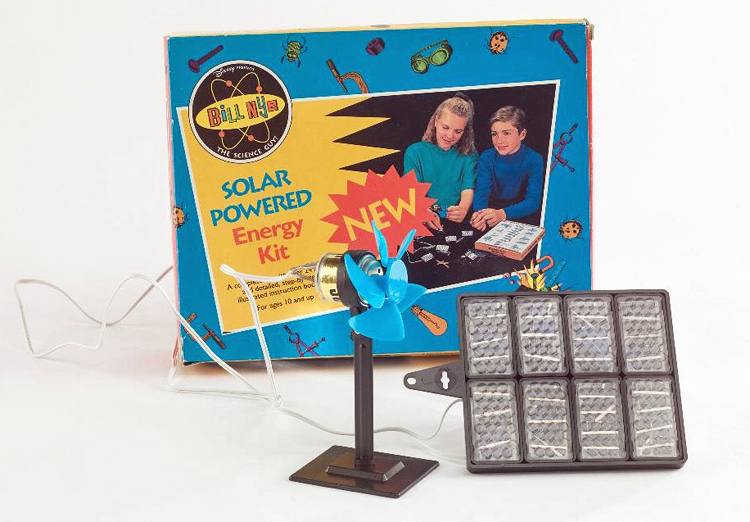
Bill Nye Solar Powered Energy Kit, 1995Companies began selling solar-powered toys for fun and education in the early 1960s. This kit features an inexpensive solar cell that can operate either in sunlight or under artificial light.Gift of Bill Nye; Smithsonian photo
SOLAR ELECTRIC: A Million Solar Roofs
The U.S. Department of Energy launched the Million Solar Roofs Initiative in 1997. When the federal program ended in 2005, California continued with its own California Solar Initiative (CSI). Through rebates and research grants, the CSI has supported nearly 500,000 solar projects. Its goal is to generate enough electricity to power about a million homes by 2018.
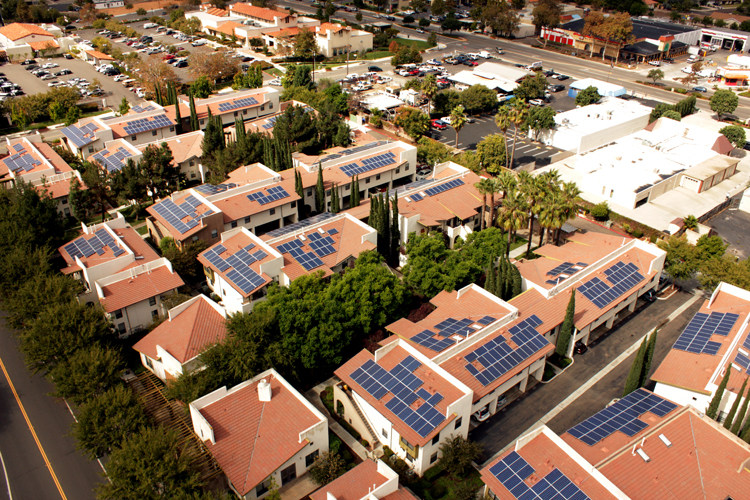
Solar panels installed on rooftops. Courtesy of National Renewable Energy Laboratory
Basically, at night and on cloudy days, a home draws power from the electric grid. But on sunny days excess power from the solar panel can feed the grid. This turns the building into both a consumer and a producer of electricity. A typical system for turning sunlight into electricity comprises a photovoltaic panel, a power inverter, and a meter:
- The photovoltaic panel contains many small solar cells that absorb sunlight and convert it into electricity. Sunlight is not very powerful so each cell produces only a small amount of electricity. Connecting the cells inside the panel combines their output. Linking several panels supplies even more electricity. The more sunlight the panel receives, the more electricity it produces—so keeping panels clear of dirt or snow is a must.
- An inverter is a critical component in a rooftop solar installation, converting direct current electricity to alternating current electricity. Solar electric panels produce low voltage, direct current (DC), the same type of current produced by a battery. With few exceptions the electrical system—and most household appliances—operate on higher-voltage alternating current (AC) produced by traditional power plants. This inverter panel also monitors and controls the flow of electricity. For safety, the system will automatically disconnect from the power lines if crews need to make repairs.
- Since Edison’s day electrical meters have measured the flow of current in one direction only—from power plant to user. Customers can then be billed for the amount of electricity they use. Measuring current that flows in both directions requires a bi-directional or net meter. It runs forward when the user draws power from the electric lines and backwards when solar panels make more power than the building is using. This feature can lower the customer’s monthly electric bill and reduces the need for new power plants to meet growing demand.
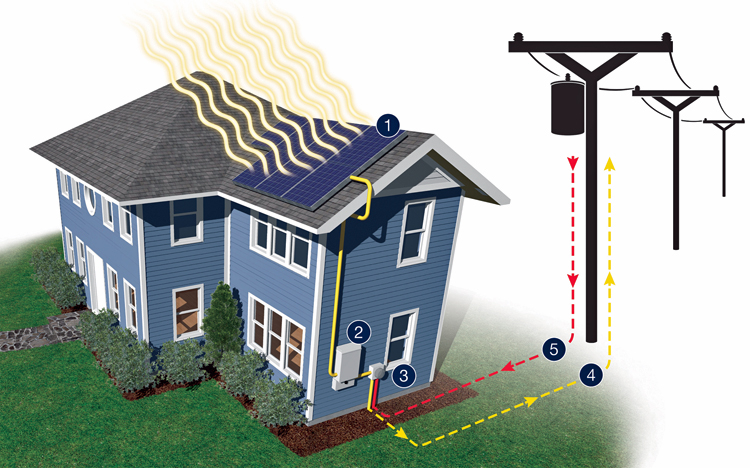
How does a rooftop solar installation work?1. Sunlight shining on the rooftop photovoltaic panel produces direct current electricity.2. An inverter changes the direct current electricity into alternating current, which is what most appliances use.3. A two-way electric meter connects to the grid, measuring the current coming into or going away from the house.4. If the photovoltaic panel produces more electricity than the home needs, the excess can be sent back into the grid.5. When the home needs more electricity than the photovoltaic panel produces, power can be drawn from the grid.
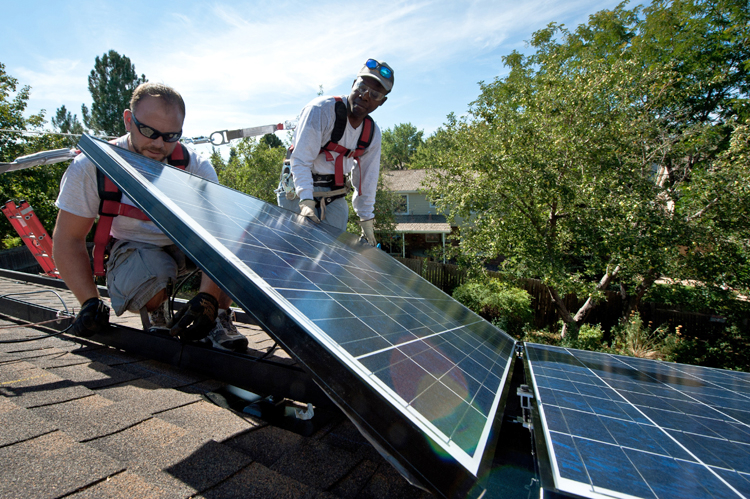
Brian Webster (left) and Mario Richard install solar panels on a home in Englewood, Colorado, 2012. Courtesy of National Renewable Energy Laboratory
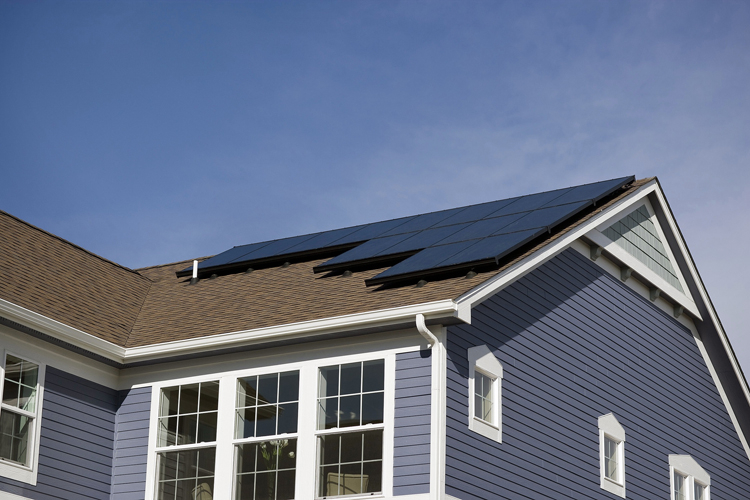
Rooftop solar panels on a home in Westminster, Colorado, 2008. Courtesy of National Renewable Energy Laboratory
SOLAR ELECTRIC: Unplugged
Solar cells are especially useful in remote locations. Engineers showcased the new technology in the 1950s and ’60s, choosing reliable and long-lasting solar cells to power satellites on long-term space missions. On Earth, photovoltaics are often used in places where electric power lines are impractical, undesirable, or nonexistent. Solar power has many applications, from traffic signs, telephone relays, and navigation equipment to wilderness cabins and recharging stations.
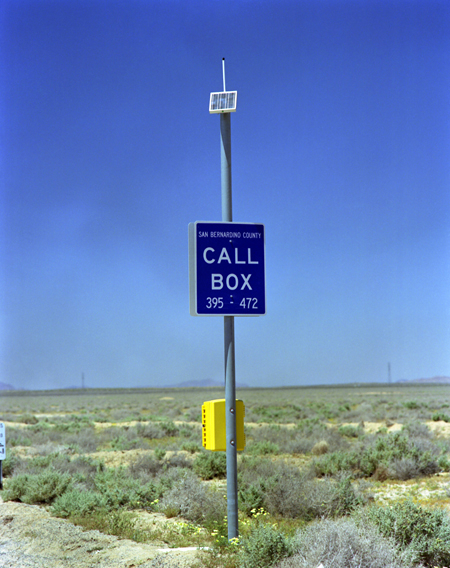
Solar panel on call box in California. Courtesy of National Renewable Energy Laboratory
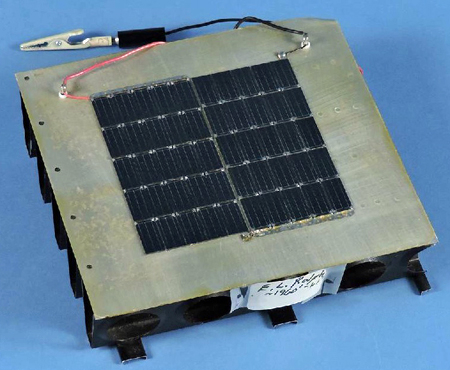
Test panel for space solar cells, 1960This panel was made in 1960 to test solar cells intended for use on spacecraft sent to other planets during Project Mariner. Batteries were cheap but too heavy and short-lived for use on most spacecraft. Early cells were very expensive but lightweight and could produce power for years. Even after half a century this panel is still producing electricity.Gift of Eugene L. Ralph; Smithsonian photo

Telstar solar cell, around 1962Scientists and engineers at Bell Telephone worked during the 1950s to design and build a telecommunications satellite. In 1962 NASA launched Telstar 1 into orbit. Bell’s solar cells, like the one seen here, covered the spacecraft and provided fifteen watts of power.Gift of American Telephone & Telegraph; Smithsonian photo
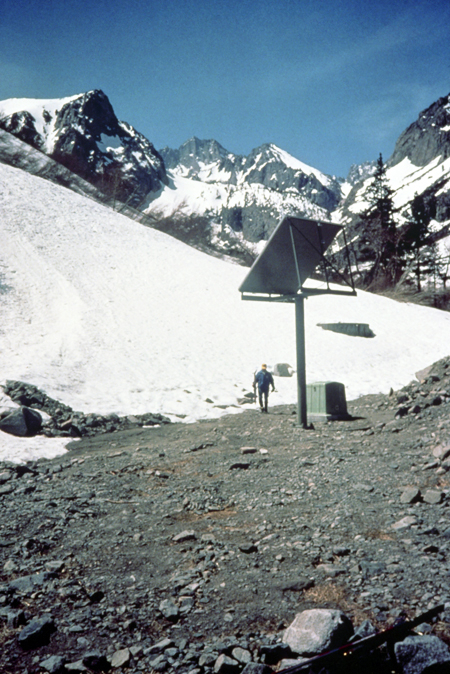
Solar-powered communications relay in Inyo National Forest, California. Courtesy of National Renewable Energy Laboratory
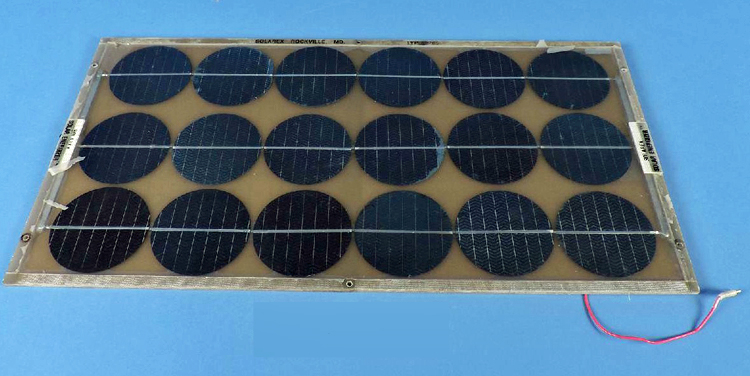
Solarex photovoltaic panel, around 1980A surge in oil production in coastal waters provided an unexpected market for solar cells. Oil companies initially used short-lived batteries to power navigation beacons on offshore platforms. Crews regularly hauled tons of heavy batteries to the platforms—an expensive process—and dumped the used batteries into the ocean. Solar panels like this one required little maintenance and lasted for years. Applications on land and at sea provided markets for solar panel producers that pushed research, lowered costs, and proved that solar cells were not solely practical in space.Gift of John Perlin; Smithsonian photo

Off-shore oil platform using solar power for navigation beacons, around 2010. Courtesy of National Renewable Energy Laboratory
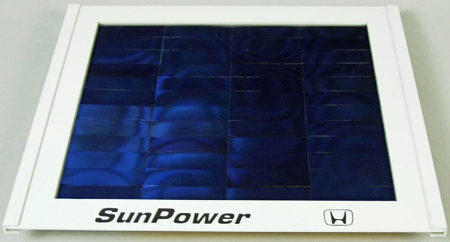
SunPower–Honda solar module, 1994In February 1994 this experimental solar module set a record for efficiency by converting nearly a quarter of the sunlight that shone on it into electricity. A team from SunPower Corp., Sandia National Lab, and EPRI were investigating ways to mass produce high-efficiency solar cells. To test their process, the team made the cells that Honda used to win the 1993 World Solar Challenge car race. Cells from that production run went into this panel—and it can still produce about twenty-six volts today.Gift of Electric Power Research Institute; Smithsonian photo
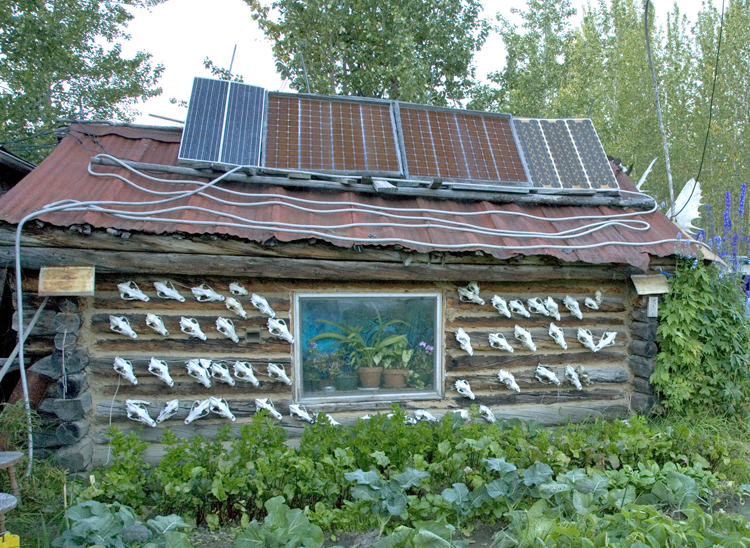
Solar panels on a remote cabin in Wiseman, Alaska. Courtesy of US Fish and Wildlife Service.
SOLAR ELECTRIC: Sunrise
Solar energy is supplying an ever larger portion of America’s electricity. The Department of Energy estimated that solar panels represent nearly 40% of the nation’s new electrical generation in 2016. Innovations that make the power grid respond better to increased use of solar are being tested in communities around the world. Even the Smithsonian is choosing to “go solar,” installing panels on several museums around the National Mall.
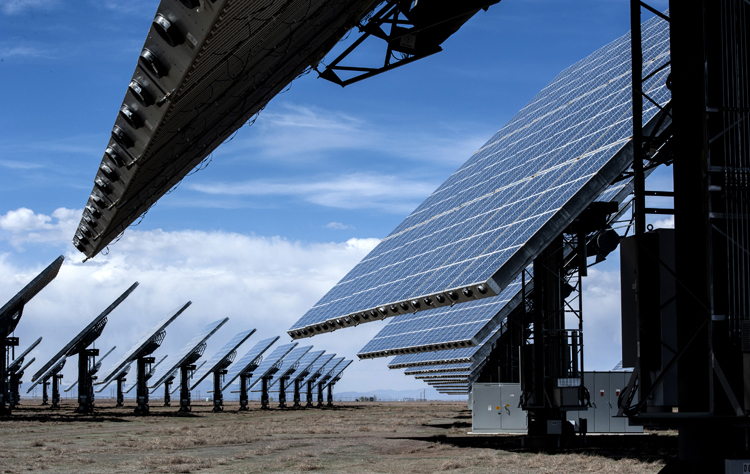
Photovoltaic panels at the Alamosa Solar Generating Project, Colorado, 2014. Courtesy of National Renewable Energy Laboratory
About the Exhibition
For centuries, inventors and entrepreneurs marveled at the idea of harnessing sunlight for the betterment of humanity. Solar on the Line introduces visitors to the history of solar energy use in the U.S. both as part of the electrical grid as well as an off-grid supplement. Exploring the innovation and technology behind solar power as a renewable energy resource, the exhibition presents multiple views on the potential benefits and challenges of this technology.
Solar on the Line opened on 29 November 2016. The exhibition is located on the 3rd Floor Center of the Smithsonian’s National Museum of American History and will be on view through 4 March 2018. Solar on the Line is the collaborative creation of many staff of the National Museum of American History and the Lemelson Center.



